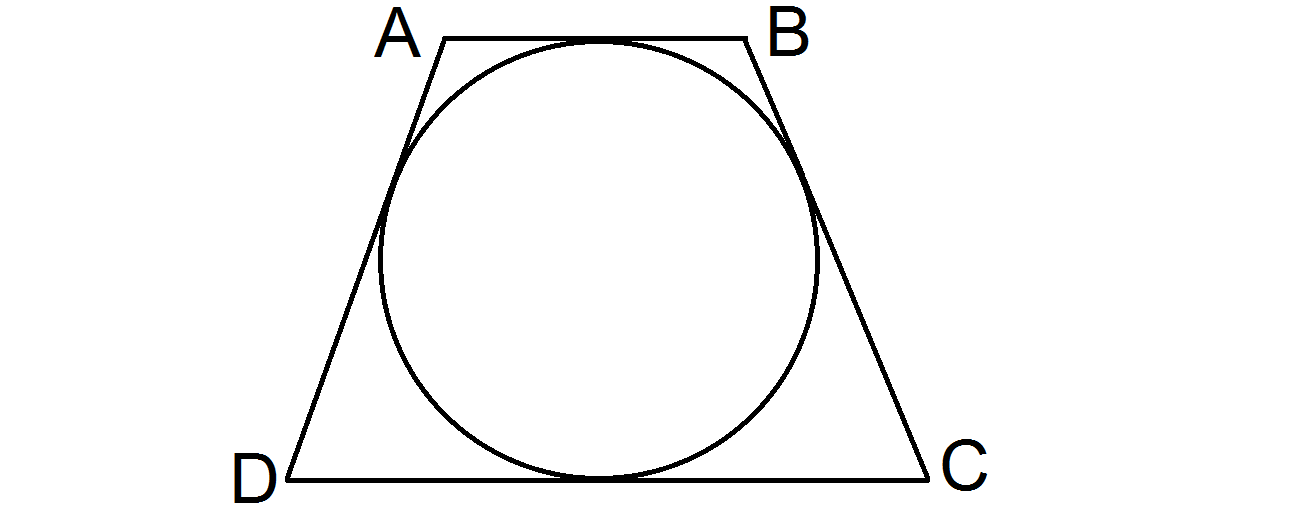Tangential Trapezoid

is a tangential isosceles trapezoid, touching the circle as shown above.
If the perimeter of the trapezoid is 52, and the circle's radius and all trapezoid's sides have lengths in whole integers, what is the area of the trapezoid?
The answer is 156.
This section requires Javascript.
You are seeing this because something didn't load right. We suggest you, (a) try
refreshing the page, (b) enabling javascript if it is disabled on your browser and,
finally, (c)
loading the
non-javascript version of this page
. We're sorry about the hassle.
According to Pitot's Theorem , for a tangential quadrilateral, A B + C D = A C + B D .
Since the perimeter is 5 2 , then 5 2 = ( A B + C D ) + ( A C + B D ) = 2 ( A B + C D ) . A B + C D = 2 6 .
All we need to know now is the height of the trapezoid, which is also the diameter of the circle because both radii from the touching points at A B and C D make the right angles with these parallel lines.
Now suppose x be the distance from touching point to either A or B and y the distance from that to C or D and h be the height of the trapezoid.
Now when we draw a perpendicular line down from point A to C D :
By Pythagorean Theorem, h 2 + ( y − x ) 2 = ( y + x ) 2 .
h 2 = 4 x y
h = 2 x y
Since the radius is the whole integer, and x + y = A D = B C = 1 3 , both x and y are perfect squares. Hence, x + y = 4 + 9 .
Then h = 2 4 × 9 = 1 2 .
As a result, the area of the trapezoid = ( 2 A B + C D ) h = 1 3 × 1 2 = 1 5 6